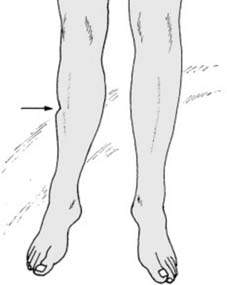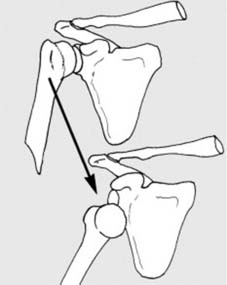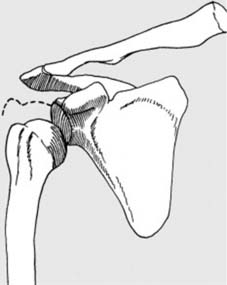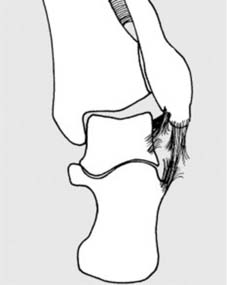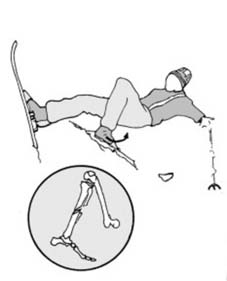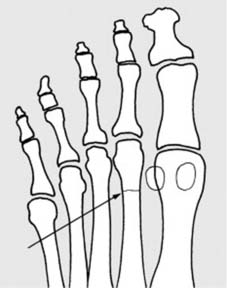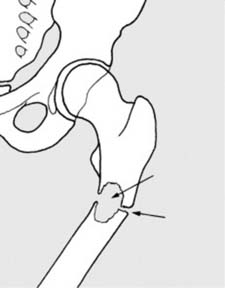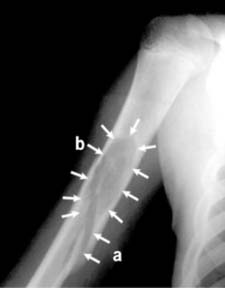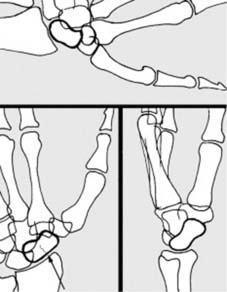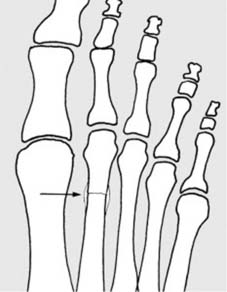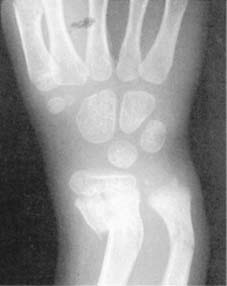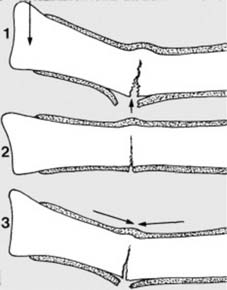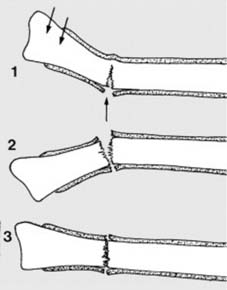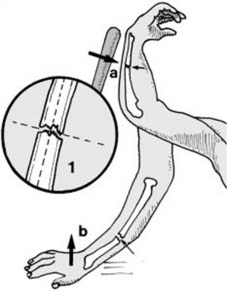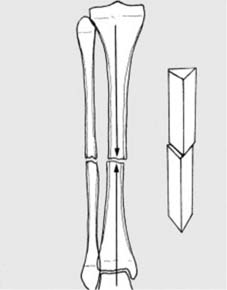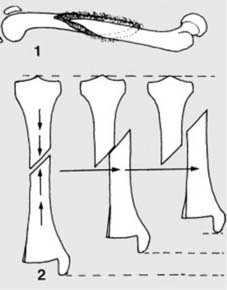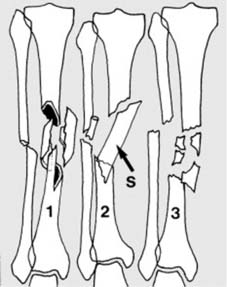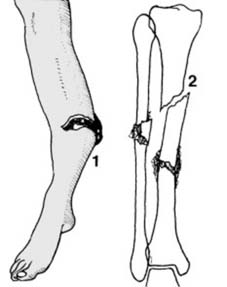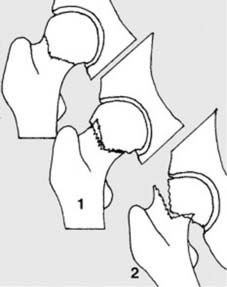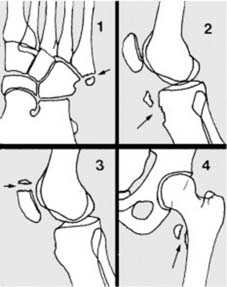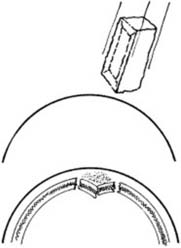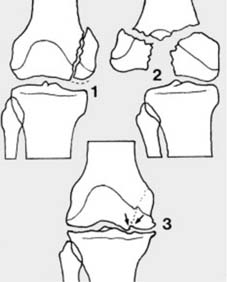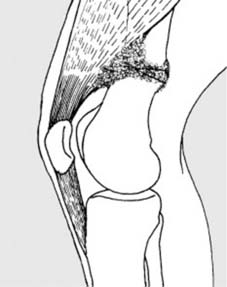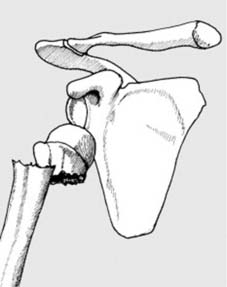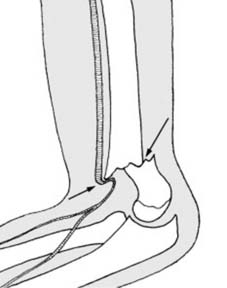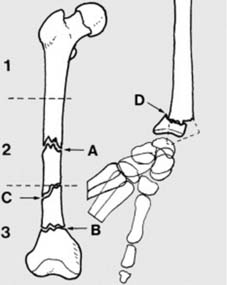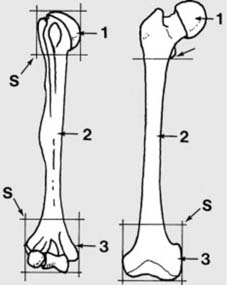Chapter 1 Pathology and healing of fractures

1 Initial definitions: Fracture: A fracture is present when there is loss of continuity in the substance of a bone. The term covers all bony disruptions, ranging from one end of the scale when (1) a bone is broken into many fragments (multifragmentary or comminuted fracture) to (2) hair-line and even microscopic fractures at the other. To the layman the word ‘fracture’ implies a more severe injury than a simple break in the bone, but in the strict medical sense there is no difference between these terms.
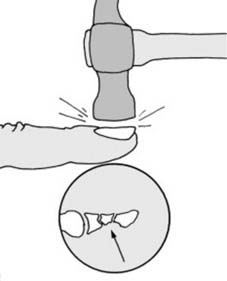
7 Causes of fracture: Direct violence (a): Fractures are caused by the application of stresses which exceed the limits of strength of a bone. Violence is the commonest cause. In the case of direct violence, a bone may be fractured by being struck by a moving or falling object, e.g. a fracture of the terminal phalanx of a finger by a hammer blow.
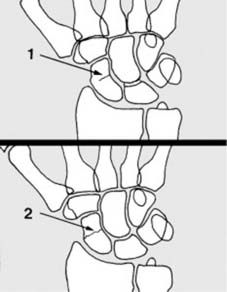
13 Fracture patterns and their significance: Hair-line fractures (a): Hair-line fractures result from minimal trauma, i.e. trauma which is just great enough to produce a fracture but not severe enough to produce any significant displacement of the fragments. Such fractures may be (1) incomplete or (2) complete.
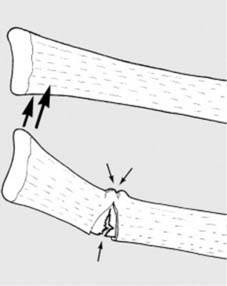
17 Greenstick fractures (a): Greenstick fractures occur in children, but not all children’s fractures are of this type. The less brittle bone of the child tends to buckle on the side opposite the causal force. Tearing of the periosteum and of the surrounding soft tissues is often minimal.
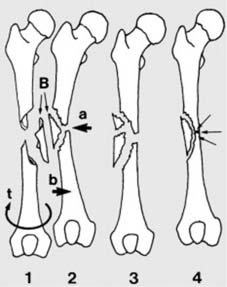
25 In multifragmentary (comminuted) fractures there are more than two fragments. The spiral wedge fracture (1) is produced by torsional forces (t), and the bending wedge fracture (2) by direct (a) or indirect (b) violence. The fragment (B) is often called a butterfly fragment (because of its shape). With greater violence a fragmented (comminuted) wedge fracture (3) results. [All these fractures are in Type B in the AO Classification (see later) and their characteristic is that after reduction there is still bony contact between the main fragments (4)].
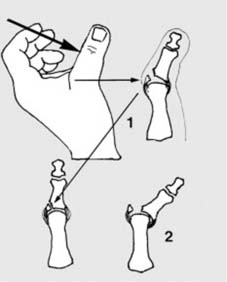
31 Avulsion fractures (b): Avulsion fractures may also result from traction on a ligamentous or capsular attachment: these are often witness of momentary dislocation; e.g. (1) an abduction force may avulse the ulnar collateral ligament attachment, with spontaneous reduction. Late subluxation (2) is common with this (‘gamekeeper’s thumb’) and other injuries and is especially serious in the case of the spine.
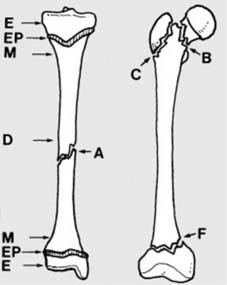
37 Describing the level of a fracture (a): The anatomical divisions of a long bone include the epiphysis (E), the epiphyseal plate (EP), and the diaphysis or shaft (D). Between the latter two is the metaphysis (M). A fracture may be described as lying within these divisions, or involving a distinct anatomical part; e.g. (A) = fracture of the tibial diaphysis; (B) = fracture of the femoral neck; (C) = fracture of the greater trochanter; (F) = supracondylar fracture of the femur.
Stay updated, free articles. Join our Telegram channel

Full access? Get Clinical Tree



